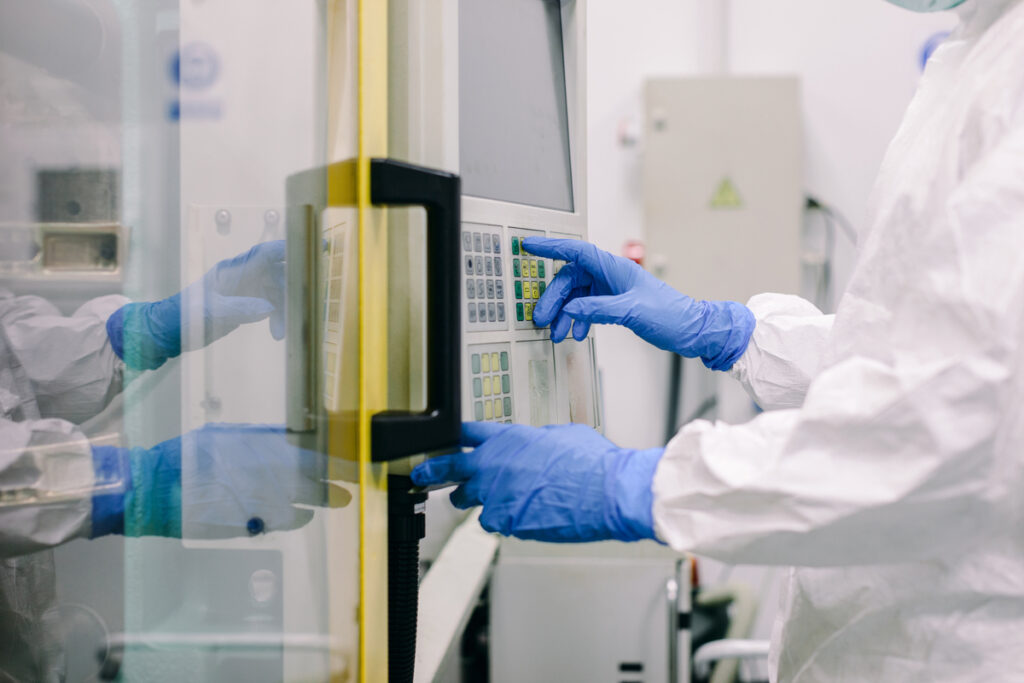In short: yes – very! There are multiple aspects of sterilization that should be examined when considering overall safety:
- Efficacy of the modality – does the modality truly and reliably produce sterile product?
- Risk of inadvertent product damage – does the sterilization procedure risk damaging the product?
- Externality risk – are there external risks (e.g. litigation, supply chain stoppage) associated with the modality?
1) Efficacy – Will My Product Be Sterilized Properly?
E-Beam sterilization is very mature and well understood. Pioneered by Ethicon (a division of Johnson & Johnson) in the 1950s, E-Beam’s performance as a sterilization modality has been well-qualified. Indeed, according to the scientific community, when it comes to radiation sterilization, dose is dose: E-Beam radiation dose is considered equivalent to both gamma and X-ray radiation for microbial inactivation.
There is no question as to whether E-Beam irradiation can eliminate harmful pathogens, and the process to assure that E-Beam is properly applied is well-understood and defined: the international standard, ISO 11137, describes tests for measuring the dose distribution within test products to produce evidence that product is treated correctly.
At NextBeam we provide expert-level guidance to customers in navigating this process, so customers can rest assured that they obtain optimal quality results – every time.
2) Risk of Inadvertent Project Damage – Will E-Beam Damage My Product?
While E-Beam is not compatible with all types of materials, material compatibility is well understood, and E-Beam material compatibility is superior to almost all modalities, including gamma, steam, dry heat, and VHP. AAMI’s TIR 17 paper offers a wealth of information about compatible materials and their stability characteristics in the high-radiation environment.
While most assume that radiation sterilization compatibility is equivalent across E-Beam and gamma, E-Beam is markedly gentler on products than gamma, the most common form of radiation processing: due to E-Beam’s rapid dose delivery, the product is dosed in seconds rather than spending hours in a highly oxidative environment, limiting damage to plastics, polymers, and coatings.
Regardless of the product, part of the E-Beam sterilization validation process is to assess and assure that the product can be irradiated without negatively impacting its function or creating any safety risk
3) Externality Risk – Are There Any External Risks That I Should Be Aware Of?
E-Beam is the most future-proof sterilization modality available today for several reasons:
- Maturity – E-Beam is recognized as an “Established Category A Method” for sterilization by the FDA. Described as “Methods with a long history of safe and effective use on medical devices,” the use of E-Beam is well-understood and recognized by the FDA.
- Sustainability – E-Beam facilities take grid power as input and produce very high velocity electrons. When these electrons are scanned across a medical device, the ionizing radiation inactivates microbes. There is no toxic, carcinogenic gas (as used in ethylene oxide sterilization) or potentially dangerous and highly radioactive materials (as used in gamma sterilization). E-Beam facilities are designed such that all radiation is safely contained inside a massive concrete bunker, and when power is shut off, the production of radiation stops instantly.
- Litigation Risk – 2023 saw major (nearly $1 billion) settlements paid to plaintiffs by some of the largest EO contract sterilization companies in the world. More lawsuits have been filed since then. While the merit of these lawsuits is unknown, they remain a factor that must be considered by those seeking sterilization over the long term. E-Beam carries none of this risk.
- Supply Risk – Gamma sterilization costs have long been on the rise as the demand for cobalt-60, the material used for gamma sterilization, outstrips global supply. Complicating this factor in 2022-2023 has been the increasingly fraught geopolitical world outlook – over 30% of worldwide cobalt-60 supply is sourced from Russia and China. E-Beam’s only input is electricity and thus carries none of this risk.
With all of these factors, we view E-Beam sterilization as the safest, lowest-risk long-term sterilization modality available.
Want personalized guidance on choosing the safest sterilization modality for your products? Connect with our experts for a consultation tailored to your specific needs and concerns.

